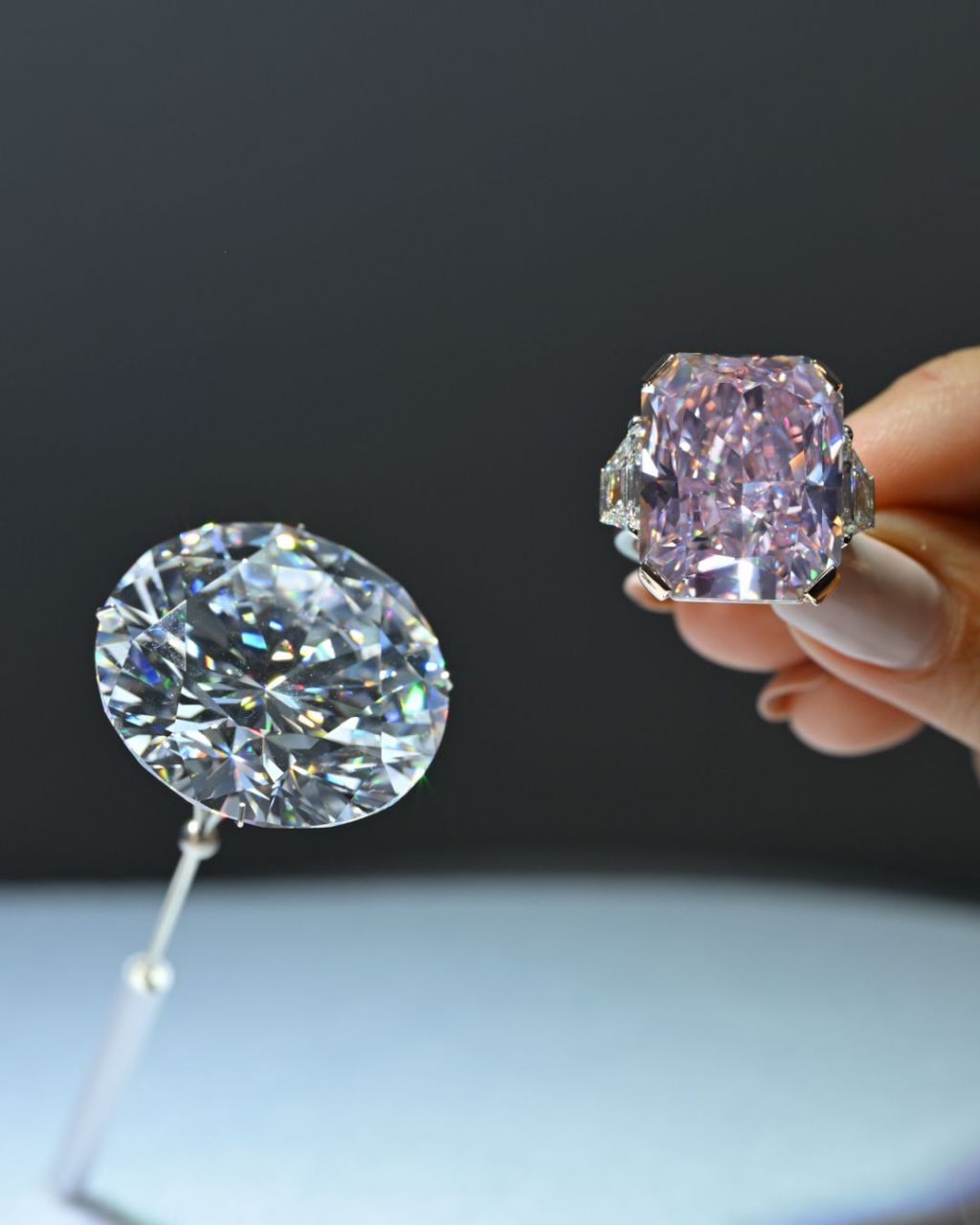Glimmers of the Past: Diamond Brooches
From royal sarpechs to high fashion silhouettes, natural diamond brooches have adorned centuries—bridging past and present in a sparkling tapestry of culture and couture
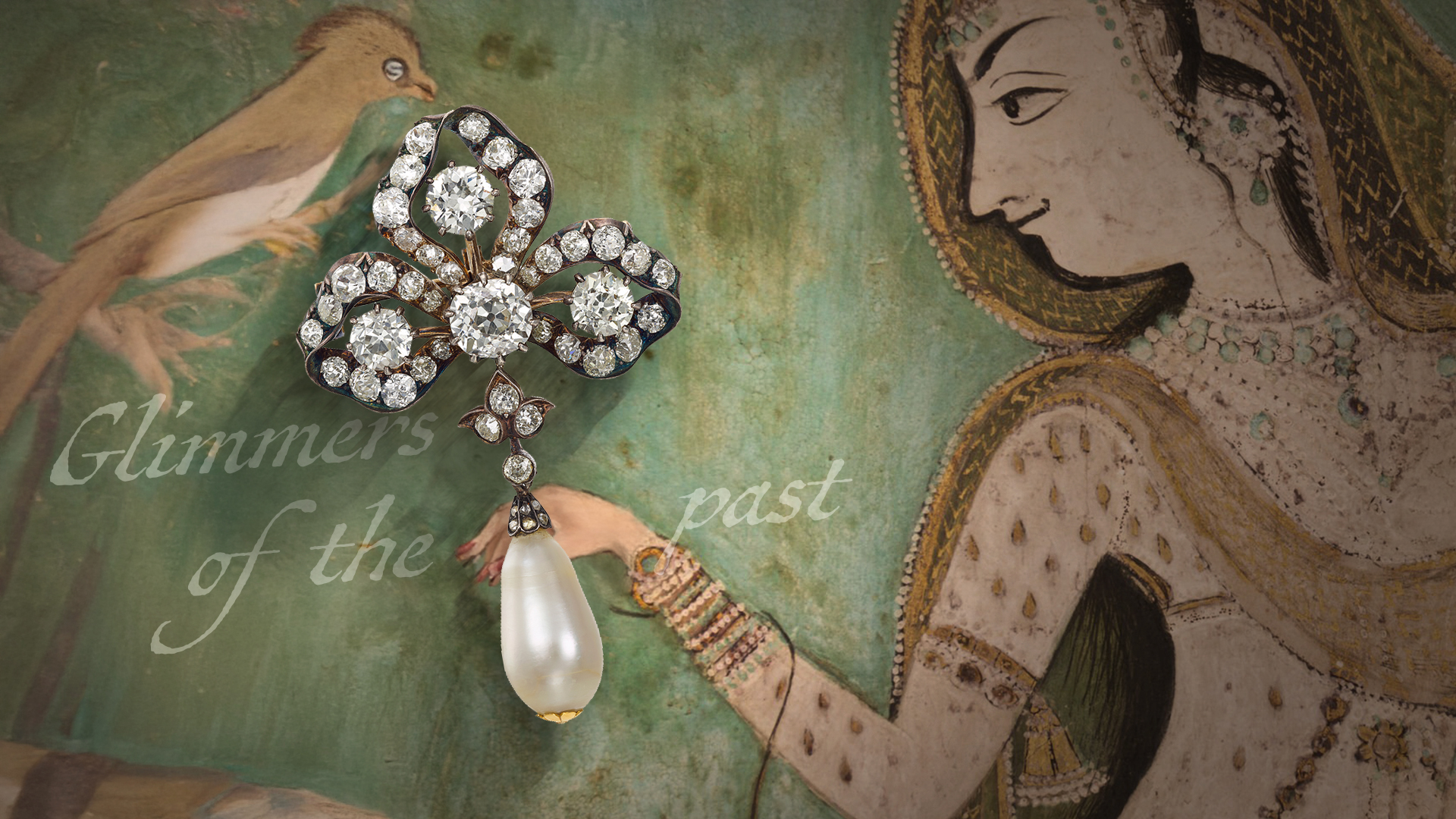
A gleaming testament to artistry and power, natural diamond brooches have long captivated royalty, nobility, and the fashionable elite. From their origins as practical fasteners to their evolution into statement adornments, these sparkling treasures have transcended eras and cultures, carving a luminous path through history. In India, the diamond brooch holds a unique place, blending tradition with cosmopolitan flair. But before we delve deeper into India’s rich history with diamond brooches, let’s better understand their history.
A Global History With
an Indian Touch
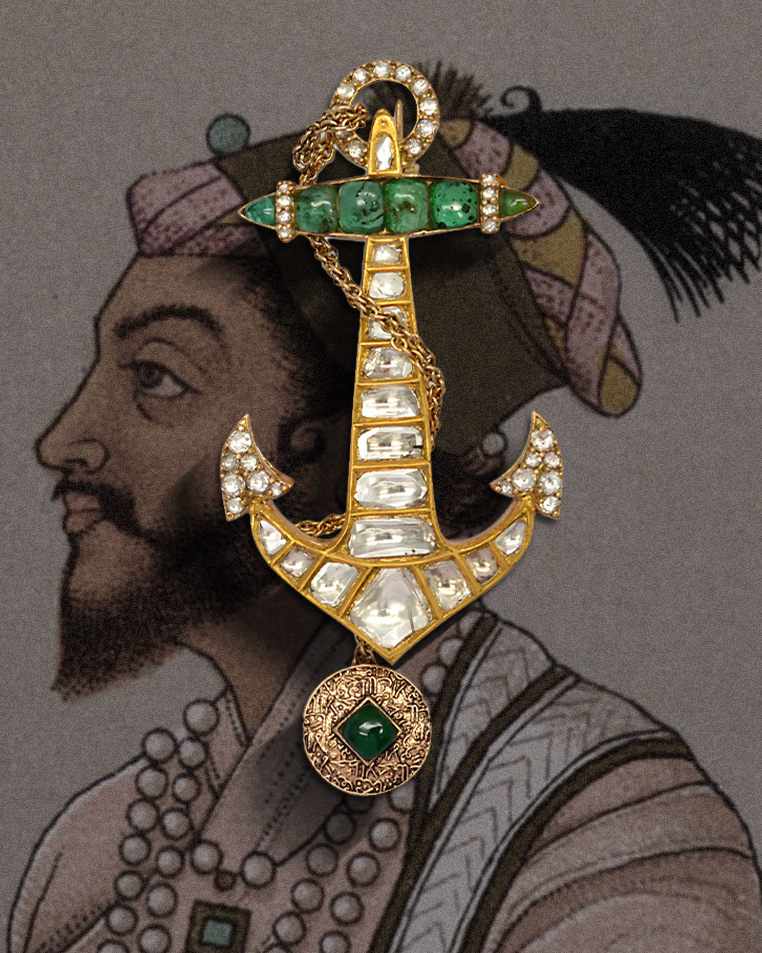
Sarpech by Birdhichand
The brooch, as we know it, originated in ancient times as a functional pin to fasten cloaks and tunics. In medieval Europe, brooches took on a decorative role, studded with gemstones to signify wealth and status. By the Renaissance, diamonds—prized for their unrivalled brilliance—became the centrepiece of brooch design.
In India, the diamond brooch emerged not as a separate entity but as part of the country’s illustrious jewellery tradition. Mughal emperors were renowned for their diamond-studded turban ornaments, known as sarpech, which often served the dual function of a brooch. These pieces were adorned with the famed Golconda diamonds , coveted worldwide for their clarity and brilliance. The sarpech was not only a symbol of authority but also an artistic marvel, featuring intricate enamel work and gem settings that rivalled the finest European designs.
The Art Deco Era:
A Renaissance for Brooches
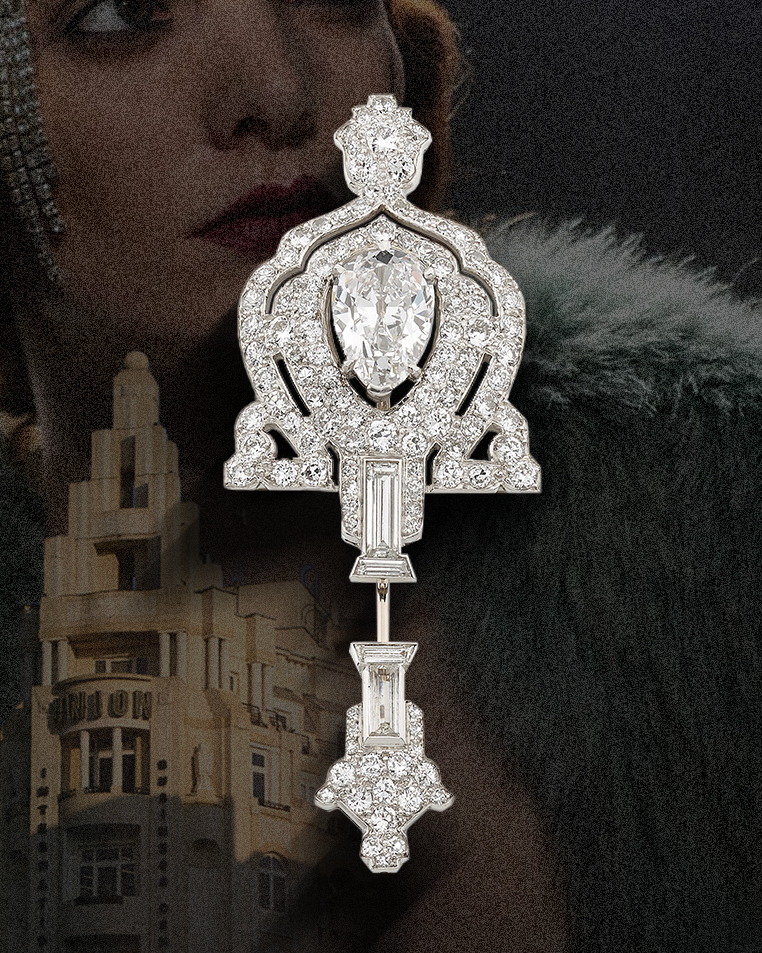
Diamond brooch by Philips
The roaring twenties heralded the Art Deco movement, and with it, a resurgence in the popularity of brooches. Characterised by geometric shapes, bold lines, and contrasting materials, Art Deco brooches were the epitome of modernity. Diamonds took centre stage, often paired with onyx, emeralds, and sapphires, to create striking designs. Brooches became indispensable accessories for both men and women. Women wore them to accentuate evening gowns and cloche hats, while men used them as lapel pins or tie ornaments. Iconic houses like Cartier and Van Cleef & Arpels crafted masterpieces that blended Indian influences—like paisley motifs and lotus shapes—with Western aesthetics, creating a cross-cultural dialogue in design.
In the hands of the Indian maharanis and elite women of the time, diamond brooches were transformed as exquisite ornaments, woven into intricate buns, braids, clinching flowing fabrics with modern precision. A whisper of an avant-garde style within the realms of India’s rich cultural heritage.
Diamond Brooches in
Indian Traditions

Diamond brooch by Moksh
In India, the brooch found its place not only in Mughal courts but also in the vibrant cultural tapestry of regions like Gujarat and Maharashtra. Among the Parsi community, brooches became an essential part of their sartorial identity. Known as khustik, these brooches were often simple yet elegant ornaments, used to secure the folds of the traditional gara sari. Some pieces, inherited over generations, feature delicate diamond-studded designs that reflect the community’s understated elegance and deep reverence for heirloom jewellery.
In Rajasthan and Gujarat, brooch-like ornaments adorned both men and women during festive occasions and weddings. These pieces were often pinned to turbans, saris, or dupattas, symbolising prosperity and heritage.
The thirties and forties saw a prolific use of brooches by Indian women, either pinned on the shoulder to fasten the pallu of the sari, or at the waist to hold together the sari pleats. Among the iconic personalities who frequently wore brooches was Sarojini Naidu, an Indian independence activist, poet, and the first woman to serve as the President of the Indian National Congress and as a State Governor in independent India.
Although Maharani Gayatri Devi was better known for wearing natural pearls with her chiffon sarees, she too used brooches for both functional and decorative purposes. Former Prime Minister Indira Gandhi was also seen wearing a brooch on her woollen overcoat when she would travel abroad.
The Contemporary Revival
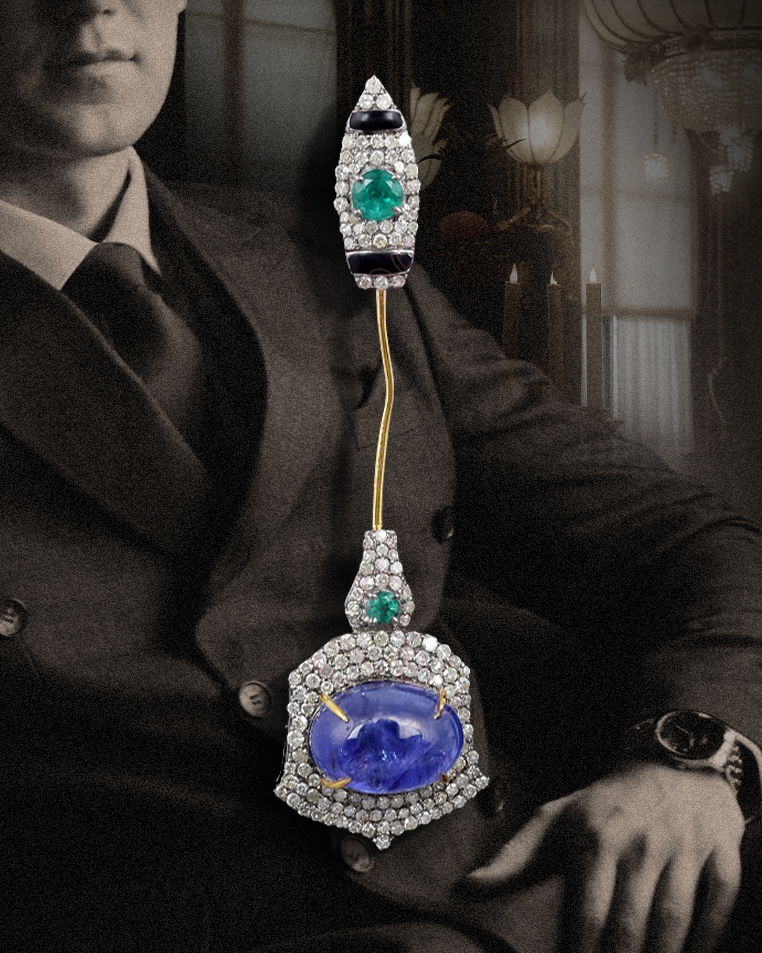
Diamond brooch by Raniwala
Brooches are enjoying a renaissance, bridging history and modernity. Madeleine Albright, former U.S. Secretary of State, wielded brooches as visual diplomacy, signalling moods during pivotal moments in history.
Today, brooches are not just for women. Diamond-studded jabot pins that were all the rage during the Art Deco era are making a comeback, seen on formal jackets on the red carpet and also soirées in India. These versatile ornaments, steeped in symbolism, are becoming powerful statements of individuality and elegance across genders.
Today, as brooches experience a renaissance in global fashion, contemporary Indian designers are embracing this classic accessory with a modern twist, and reimagining brooches as hairpins, pendants, turban, and sari embellishments.
The development of abstract diamond shapes and facet patterns has also contributed towards the growth of the brooch segment with designers employing portrait-cut, trapezoid, chevron, half-moon, movals and other shapes to create modern brooches for both men and women.
Subjects for modern Indian brooches range from the whimsical to the spiritual. The designs often combine traditional craftsmanship with innovative techniques, featuring motifs like elephants, florals, and abstract shapes that resonate with India’s rich artistic heritage.
Timeless Appeal

Diamond brooch by Saffron Art
Whether evoking nostalgia for a bygone era or making a bold fashion statement, diamond brooches continue to enchant. Their ability to blend history, culture, and contemporary design ensures their enduring appeal. In India, where jewellery expresses identity and legacy, brooches are more than embellishments—they are storytellers, bridging the past and the present with a sparkle that remains eternal.
From Mughal sarpech to Parsi khustiks, and now to modern haute couture, diamond brooches are a testament to the enduring allure of natural diamonds. For connoisseurs and collectors, they represent not just an accessory but a piece of history, culture, and individuality. After all, what better way to wear your story than with a natural diamond?
